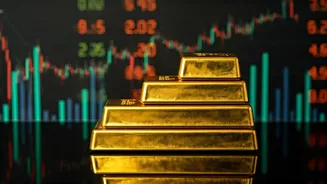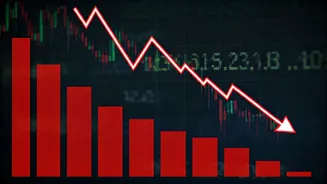Unprecedented Import Levels
India's gold imports for October reached an unprecedented $14.72 billion. This figure represents a considerable jump compared to previous periods, indicating
a heightened interest in the precious metal. The increase in gold imports signals a possible shift in investment patterns and economic sentiment. As gold is frequently regarded as a safe-haven asset, its demand frequently spikes during periods of economic uncertainty, which suggests potential anxieties within the financial markets. The large import value not only reflects the volume of gold entering the country but also points to the value attributed to it by Indian investors and consumers.
Factors Driving Demand
Multiple factors potentially contributed to the significant surge in gold imports. One primary driver could be the anticipation of seasonal demand, particularly the festive season and wedding season, which typically witness an increase in gold purchases. Another factor could be the fluctuating global economic conditions and geopolitical tensions, which often lead investors to seek the perceived safety of gold. Furthermore, changes in government policies, such as import duties and regulations, can significantly impact the demand and movement of gold. The record-high imports could be related to hedging strategies by businesses, or investment by high-net-worth individuals, showing confidence in the long-term value of gold.
Impact on Economy
The surge in gold imports has various effects on the Indian economy. While it boosts the trade deficit, the implications are complex. A higher trade deficit can potentially influence the value of the rupee, causing it to depreciate against other currencies. This situation may affect overall import costs. Conversely, gold's presence in the market can stimulate economic activity through retail sales and downstream industries like jewelry manufacturing. It's crucial to evaluate the broader impact on India's balance of payments, foreign exchange reserves, and consumer spending patterns. Tracking these dynamics offers an understanding of the overall economic health and the role of gold within the financial landscape.
Gold Prices' Ascent
Parallel to the increase in gold imports, global gold prices have experienced an upswing. This trend suggests a positive correlation between international market forces and domestic demand. While local market conditions like taxes and transportation costs also play a role, the trajectory of international gold prices strongly influences consumer prices in India. Factors such as the US dollar's strength, global inflation, and interest rate policies of central banks also contribute. Monitoring these elements is crucial to decipher the full picture of the gold market. The upward price movement reflects the changing investment strategies of many Indians, who see gold as a store of value.
Future Outlook
Looking forward, the trend of high gold imports will likely continue to be a topic of interest. Economic indicators, such as consumer spending, global uncertainty, and upcoming policy changes, will significantly impact the trajectory of gold demand. The Reserve Bank of India's stance on gold reserves and its broader monetary policy may affect the market dynamics. Moreover, any shifts in the global supply chain, including factors like mining output and geopolitical scenarios, can shape the supply side. Investors, policymakers, and industry experts will be watching the trends in gold closely. Analyzing these elements together offers a more comprehensive perspective on gold's significance in the Indian economy.

















